'There Is A Surprisingly High Proportion Of Players Who Simply Don’t Have A Clue' – The Five Rules I See Most People Struggle With
The Rules of Golf can be complex and here is an explanation to some of those that people encounter most and often get wrong
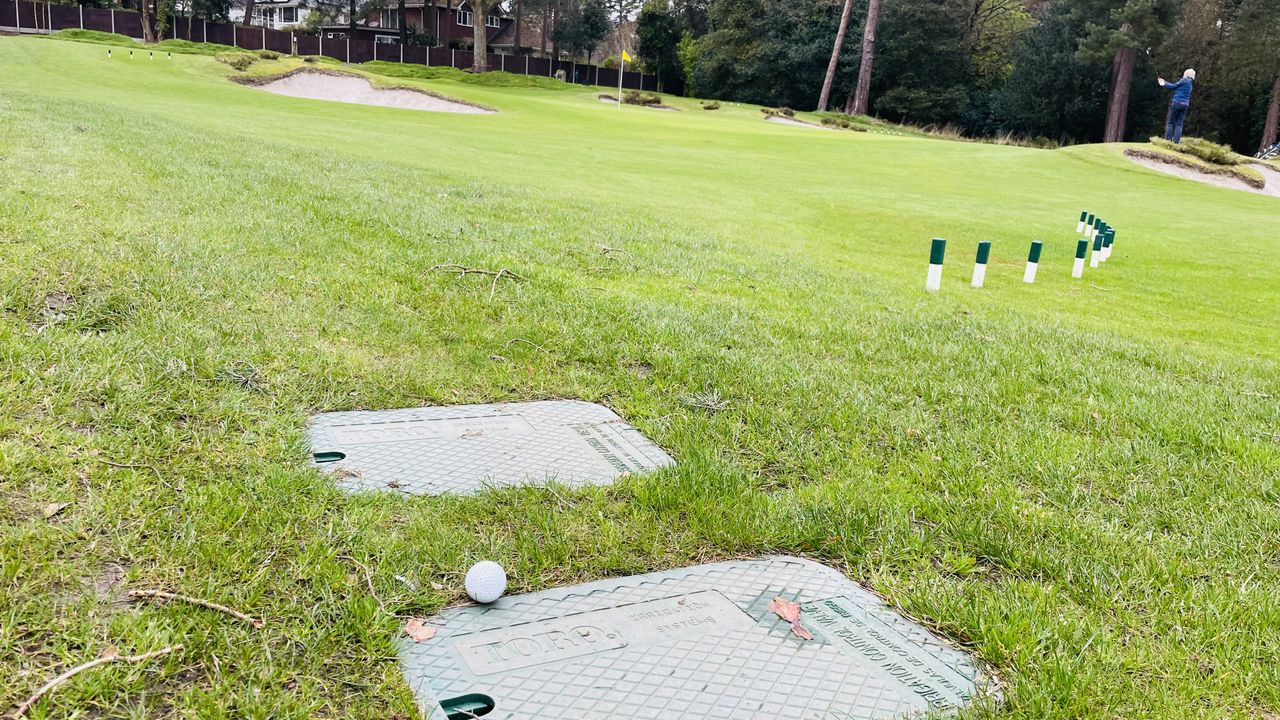

I play golf in two women’s competitions a week throughout the year so it’s fair to say I’m exposed to a lot of different players of all abilities. When it comes to the Rules of Golf there is a surprisingly high proportion of my fellow players who simply don’t have a clue what is right or wrong.
They don’t know how to correctly take a penalty drop or what to do when they’ve lost a golf ball. These 'fundamental' rules, as I’d like to call them, are the ones that we encounter the most often and therefore I see no excuse why we should not know them inside out.
Whether it’s laziness from not learning them properly, confusion from the changes made to the Rules in recent years or forgetfulness, there’s simply no excuse not to get these right.
Here are my top 5 rules that you should know and the correct way of ensuring that you are sticking to them.
Taking Relief From An Immovable Obstruction (Rule 16.1)
The very phrase 'immovable obstruction' causes confusion among the women I play with. It’s exactly as described, something you can’t move. So things like sprinkler heads, water drains, buggy paths or any other man-made object that cannot be moved without 'unreasonable effort' or causing damage to the course.
I find that many women think that they only get relief if their ball is actually touching the obstruction. In fact, you can also take relief if the obstruction interferes with the area of your swing or your stance.
My biggest gripe of all is watching women take relief poorly. Remember it’s your 'nearest point' of relief not the 'nicest'. Also, make sure that you take 'complete' relief from the obstruction. In other words, if you’re standing on a buggy path, you must make sure that after taking relief, the path is no longer impeding your stance, swing or lie before hitting your next shot.
Get the Golf Monthly Newsletter
Subscribe to the Golf Monthly newsletter to stay up to date with all the latest tour news, equipment news, reviews, head-to-heads and buyer’s guides from our team of experienced experts.
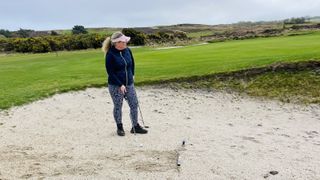
Touching The Sand In A Bunker (Rule 12.2)
I spent most of my junior days feeling very anxious and aware of keeping my sand wedge raised high as I stepped into a bunker for fear of accidentally brushing the sand. Thankfully, this was one of the sensible changes approved by the USGA and R&A in the 2019 Rules of Golf update. You can now touch the sand in a variety of situations without worry, so long it’s not on purpose in an attempt to test the sand.
For instance, did you know that if you walk into a bunker with two clubs in hand, uncertain of your choice, you can place that spare club you’re not using on the sand. Likewise, if you are standing in the bunker waiting for a playing partner to hit their shot, there’s no penalty if you rest your sand wedge down or lean on it while you are waiting.
The Rule that hasn’t changed is when addressing the ball you must not ground your club. You still can’t touch the sand if you take a practice swing either. Both of these latter points I see women do carelessly in error, frequently!

Hitting A Provisional Ball (Rule 18.3)
This is something I witness almost every week on one particular hole at my home course, Parkstone GC in Dorset. The par-5 11th tee shot (pictured above) is played directly over a penalty area, which also runs down the left and the right side of the start of the hole. In other words, there are three chances to end up in the penalty area off the tee.
It’s a treacherous hole, but it’s clearly marked with red stakes. The first thing to remember is that hitting a provisional ball is prohibited when it is 'known or virtually certain' that the original ball is in a penalty area. Instead, you must proceed under one of the three penalty relief options for a red penalty area under Rule 17.1d, assuming it's impractical (or unwise!) to try and play it if you do find it in the penalty area.
However, if it is not 'known or virtually certain' (so there is some doubt) as to whether or not it's in the penalty area, you may play a provisional ball, but if the original ball is then found in the penalty area and you don't wish to play it - or you are virtually certain it is in there now you can see the lie of the land better where you believe your ball landed - you must abandon the provisional ball and proceed under one of the red penalty area relief options - stroke-and-distance, back-on-the-line or two club-lengths from where the ball is estimated to have last crossed the edge of the red penalty area.
Other things to remember when hitting a provisional ball. Firstly, you must always declare it to be a provisional ball before teeing off. Secondly, once you’ve declared and hit a provisional ball you cannot elect to play it if your original ball is then found and you don’t like the look of how it is lying and don't wish to play it. In this instance, you must take relief for an unplayable lie, which might mean you still have to go back to the tee and hit another shot as three off the tee.

Taking Relief From Penalty Areas - Red & Yellow Stakes (Rule 17.1)
It’s sometimes painful watching women get this wrong. There are two different coloured stakes on the golf course, red and yellow. They both define the edge of a penalty area. There is only really one difference between the options you have when taking relief from a red penalty area versus a yellow.
The red stakes allow you to take lateral (sideways) relief up to two club lengths, no nearer the hole, from where the ball last entered the penalty area. You must identify where the edge of the penalty area is in line with your golf ball (no nearer to the hole). I normally push a coloured tee peg into the ground to locate this spot. Then you can measure the two club lengths from your coloured tee peg.
You must measure two club lengths with the longest club you are carrying for that round other than your putter (if you use a long one). There is no penalty if you measure with a headcover on your driver, however, ensure you drop within an area that would have been fine if measured without the headcover on.
This lateral relief option is IN ADDITION to the two other options you have for taking relief from a yellow stake. These are:
Return to the spot where you just hit your previous shot from and drop another ball
Take back-on-the-line relief where you can drop a ball anywhere as far back as you line, drawing an imaginary line from the hole, through the spot where the ball last crossed the penalty area, to the point you choose.
In all of the above options you take a one-shot penalty. Don’t forget that you always have the option to play the ball as it lies from within the penalty area and the Rules now permit you to ground your club behind the ball at address.

Searching For A Lost Ball (Rule 18.2)
The majority of women I play golf with DO NOT pay accurate attention to the amount of time that they are searching for a lost ball for. In the most recent update to the Rules of Golf this was one of the major changes.
The time that you are allowed to search for a ball was reduced from 5 minutes to 3 minutes. This really isn’t very long, and I totally get it, we are trying to speed up play and stop holding up the whole field, however to avoid being in breach of the Rules you must time your search. I wear a golf watch so I always glance at the time before I enter the rough, trees or trouble in my hunt. I then make a point of telling fellow players when my time is up.
If the people you are playing with get there first and start searching, that is a bonus for you as the three minutes don't start until you or your caddie start searching.
Are there other Rules you see being broken all the time? You can recap your knowledge of the Rules of Golf via the R&A’s handy Rules Hub, visit www.randa.org/rules/rules-hub

Carly Frost is one of the golf industry’s best-known female writers, having worked for golf magazines for over 20 years. As a consistent three-handicapper who plays competitive club golf at Parkstone and the Isle of Purbeck courses in Dorset every week, Carly is well-versed in what lady golfers love. Her passion for golf and skill at writing combine to give her an unbeatable insight into the ladies game.
Carly’s role at Golf Monthly is to help deliver thorough and accurate ladies equipment reviews, buying advice and comparisons to help you find exactly what you are looking for. So whether it’s the latest driver, set of irons, golf ball, pair of shoes or even an outfit, Carly will help you decide what to buy. Over the years she has been fortunate to play some of the greatest courses in the world, ranking Sea Island, Georgia, USA, among her favourite golf resorts. Carly's aptly-named son Hogan is already hitting the ball as far as mum and will undoubtedly be a name to watch out for in the future. Carly is a keen competitor and her list of golfing achievements are vast. She is a former winner of the South West of England Ladies Intermediate Championship, a three-time winner of the European Media Masters and she once beat an entire start-sheet of men to the title of Times Corporate World Golf Champion. She has played for both the Dorset and Surrey County Ladies first teams and is known for her excellent track record at matchplay.
Carly holds the ladies course record (68) at her home club Parkstone and her lowest competition round (seven-under-par 65) was carded in the pro-am of the Irish Ladies Open at Killeen Castle, playing alongside Solheim Cup superstar Anna Nordqvist. Although her current handicap index has crept up to 3.7 since Covid she has her sights firmly set on achieving that elusive scratch handicap and hopefully playing for her country when she’s 50.
Carly’s current What's In The Bag?
Driver: Callaway Epic Max, 10.5°
Fairway wood: TaylorMade SIM2, 15°
Hybrids: Titleist TS2, 19°, 21°, 24°
Irons: Mizuno JPX900, 5-PW
Wedges: Cleveland RTX, 52°, 56° and 58°
Putter: Scotty Cameron Futura X5
Ball: 2021 Callaway Ladies SuperSoft
-
 How Eugenio Chacarra Can Qualify For A PGA Tour Card Following Indian Open Success
How Eugenio Chacarra Can Qualify For A PGA Tour Card Following Indian Open SuccessEugenio Chacarra secured his DP World Tour card with victory at the Hero Indian Open, but what does it mean for his chances of making it to the PGA Tour?
By Mike Hall Published
-
 Texas Children's Houston Open Leaderboard: Min Woo Leads By Four After Strong Start
Texas Children's Houston Open Leaderboard: Min Woo Leads By Four After Strong StartThe Australian sits at 17-under-par and four shots clear going into the final day at Memorial Park, with Lee searching for a maiden PGA Tour victory
By Matt Cradock Last updated
-
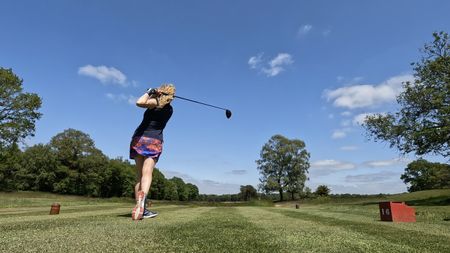 Tee Box Inequality: Why Aren't All Tees Rated For Women?
Tee Box Inequality: Why Aren't All Tees Rated For Women?Long-hitting female golfers are let down by tee ratings
By Katie Dawkins Published
-
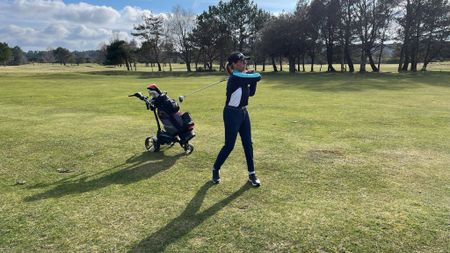 What I Learned From My First Golf Competition: The Unexpected Importance Of Preparation
What I Learned From My First Golf Competition: The Unexpected Importance Of PreparationPlaying in your first golf competition can be a daunting experience. Here are 5 tips to help you prepare for a stress-free round
By Carly Cummins Published
-
 I've Always Struggled To Create That Solid, Compressed Strike... Until I Fixed These 5 Key Moves
I've Always Struggled To Create That Solid, Compressed Strike... Until I Fixed These 5 Key MovesSingle figure golfer Jess Ratcliffe on how she has fixed her swing puzzle to deliver crisp shots
By Jess Ratcliffe Published
-
 Fix These 7 Common Mistakes And You'll Be On The Path To Lower Scores
Fix These 7 Common Mistakes And You'll Be On The Path To Lower ScoresPGA Professional Emma Booth on how to fix the mistakes all high handicappers make
By Emma Booth Published
-
 ‘It’s About Perception, Not Rules. Women Are Allowed To Wear A Lot More Than Men At Most Golf Courses’ - Mia Baker On Golf's Dress Code
‘It’s About Perception, Not Rules. Women Are Allowed To Wear A Lot More Than Men At Most Golf Courses’ - Mia Baker On Golf's Dress CodeContent creator and presenter Mia Baker on why changing mindsets is key to building a more inclusive golf community
By Alison Root Published
-
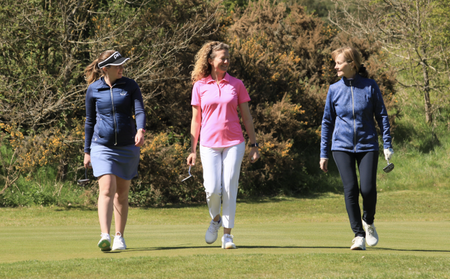 ‘Most Of The Time I Don’t Bother Signing Up’ - The Cliquey Culture Hurting Women’s Golf
‘Most Of The Time I Don’t Bother Signing Up’ - The Cliquey Culture Hurting Women’s GolfOur women's golf editor highlights an issue that is quietly pushing some female golfers to the sidelines
By Alison Root Published
-
 The One Mental Mistake Pro Golfers Never Make - Are You Guilty Of It?
The One Mental Mistake Pro Golfers Never Make - Are You Guilty Of It?Top 50 Coach Katie Dawkins shares her tips on how to mentally reset your golf game
By Katie Dawkins Published
-
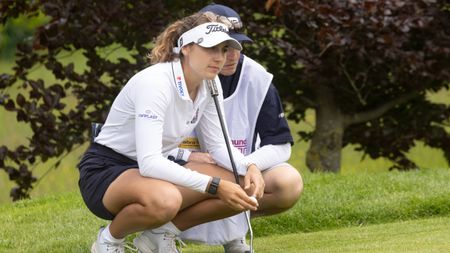 The Cold Hard Stats And Harsh Realities That No One Tells You About Turning Pro
The Cold Hard Stats And Harsh Realities That No One Tells You About Turning ProFormer pro Kathryn Imrie reveals the brutal truth on what it really takes - from swing speeds to bank balances - to make it in the world of professional golf
By Kathryn Imrie Published